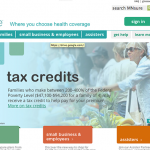 The Blue Cross and Blue Shield Association, which represents 36 Blue Cross and Blue Shield plans covering 105 million Americans has released a study of its members’ claims data in Obamacare exchanges 2014 and 2015. It confirms Obamacare exchange enrollees are sicker and more expensive than enrollees in pre-Obamacare individual plans or employer-based plans:
The Blue Cross and Blue Shield Association, which represents 36 Blue Cross and Blue Shield plans covering 105 million Americans has released a study of its members’ claims data in Obamacare exchanges 2014 and 2015. It confirms Obamacare exchange enrollees are sicker and more expensive than enrollees in pre-Obamacare individual plans or employer-based plans:
Members who newly enrolled in BCBS individual health plans in 2014 and 2015 have higher rates of certain diseases such as hypertension, diabetes, depression, coronary artery disease, human immunodeficiency virus (HIV) and Hepatitis C than individuals who had BCBS individual coverage prior to health-care reform.
Consumers who newly enrolled in BCBS individual health plans in 2014 and 2015 received significantly more medical care, on average, than those with BCBS individual plans prior to 2014 who maintained BCBS individual health coverage into 2015, as well as those with BCBS employer-based group health insurance.
The new enrollees used more medical services across all sites of care—including inpatient admissions, outpatient visits, medical professional services, prescriptions filled and emergency room visits.
Medical costs of care for the new individual market members were, on average, 19 percent higher than employer-based group members in 2014 and 22 percent higher in 2015. For example, the average monthly medical spending per member was $559 for individual enrollees versus $457 for group members in 2015.
These health plans have not done a great job containing costs in employer-based health plans either. Those policies’ average monthly health spending increased 8 percent in the first nine months of 2015 versus 2014. However, costs in individual policies increased 12 percent, half again as much. This means the gap in medical spending between the two markets is increasing.
Read More » »
 Obamacare crushes jobs because of its loopy distribution of tax credits. As discussed previously, the tax credits (which reduce premiums) for Obamacare coverage phase out in such a way that beneficiaries face very high marginal income tax rate hikes at household incomes up to 400 percent of the Federal Poverty Level.
Obamacare crushes jobs because of its loopy distribution of tax credits. As discussed previously, the tax credits (which reduce premiums) for Obamacare coverage phase out in such a way that beneficiaries face very high marginal income tax rate hikes at household incomes up to 400 percent of the Federal Poverty Level.







